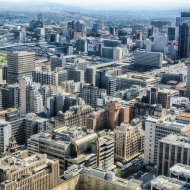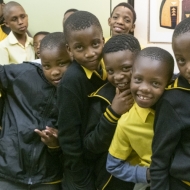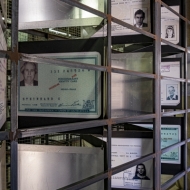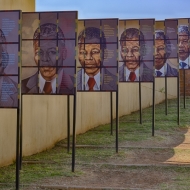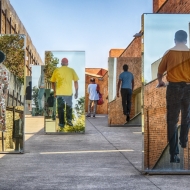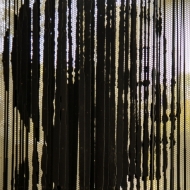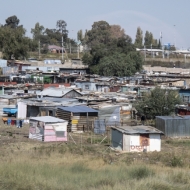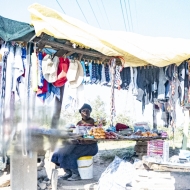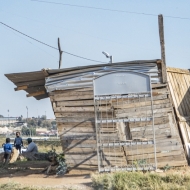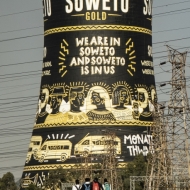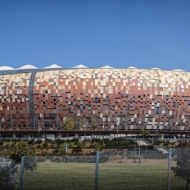We were fortunate to have a day in Johannesburg to experience a bit of the largest city in South Africa. Our tour guide picked us up at the airport hotel, and took us to some of the area highlights, and we also toured some of the eye-opening poor conditions in the city.
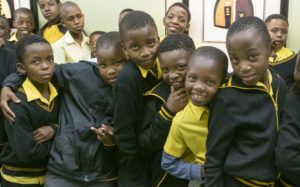 Our first stop was at the tallest building in Africa, the Top of Africa. In addition to seeing expansive views of the city, we enjoyed sharing high-fives with local school children on a class trip. We crossed the Nelson Mandela Bridge then went to the Apartheid Museum, acknowledged as the pre-eminent museum in the world dealing with 20th century South Africa, at the heart of which is the apartheid story.
Our first stop was at the tallest building in Africa, the Top of Africa. In addition to seeing expansive views of the city, we enjoyed sharing high-fives with local school children on a class trip. We crossed the Nelson Mandela Bridge then went to the Apartheid Museum, acknowledged as the pre-eminent museum in the world dealing with 20th century South Africa, at the heart of which is the apartheid story.
We learned about the history and cultural importance of Soweto, originally an acronym for “South-Western Townships”. Soweto originated as a collection of settlements on the outskirts of Johannesburg, populated mostly by native African workers from the gold mining industry. Soweto, now part of Johannesburg, for years had been separated as a residential area for Blacks, who were not permitted to live in Johannesburg proper. We visited the former homes of Nelson Mandela and Archbishop Desmond Tutu, which amazingly, are located only a few blocks apart. Amazing that two Nobel Peace Prize awardees lived on the same street.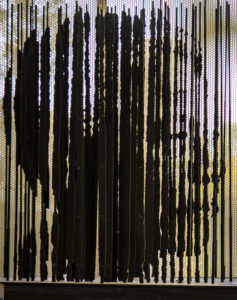
Our guide drove us through the low-income areas of Johannesburg, where the living conditions were deplorable. He explained that there is still a lot of corruption in Johannesburg, making it almost impossible for many to earn a decent living. The tin huts stacked side-by-side were small with no plumbing or electricity, and they seemed to go on for miles. In contrast, just a few miles away is the enormous Soccer City stadium which hosted the 2010 FIFA World Cup final.
Back to African Safari landing page.
Check out our other Destinations

